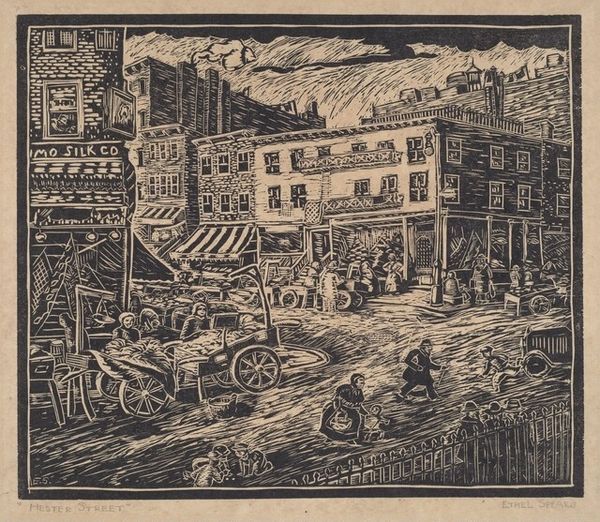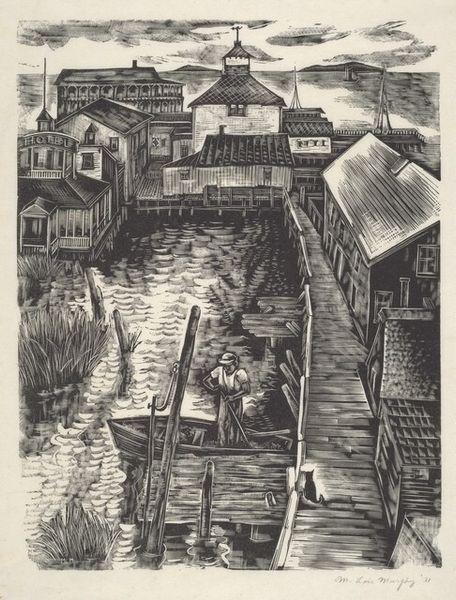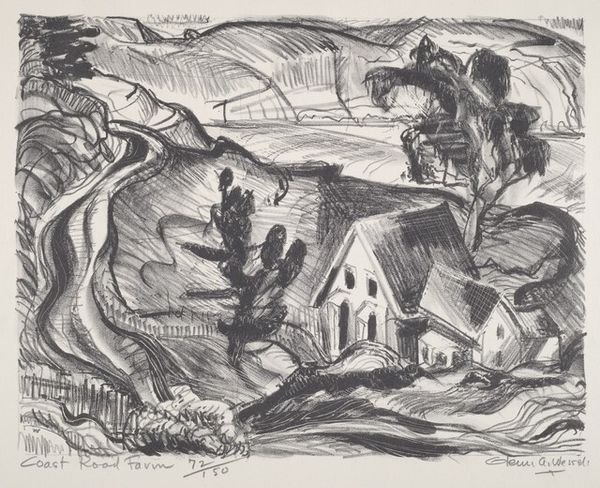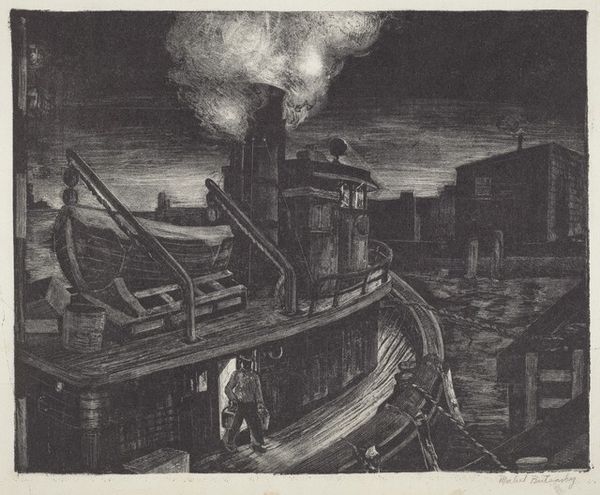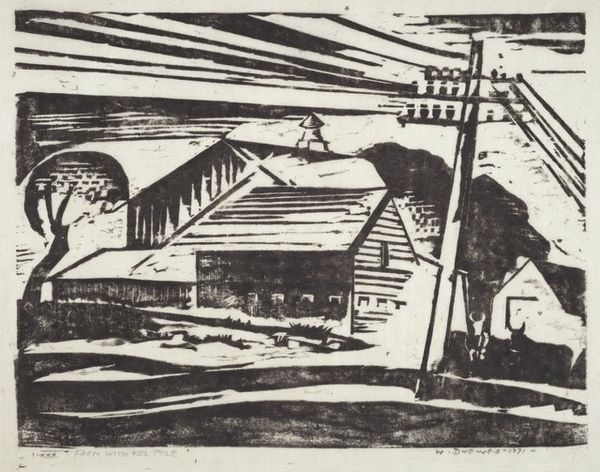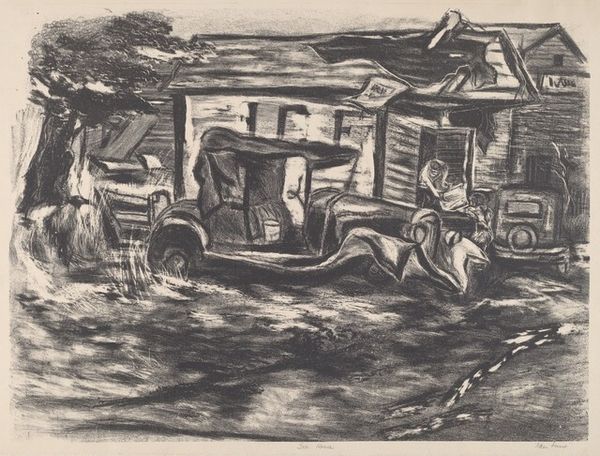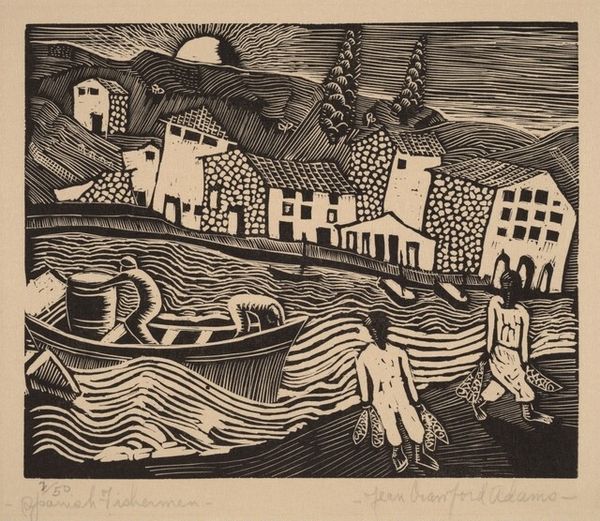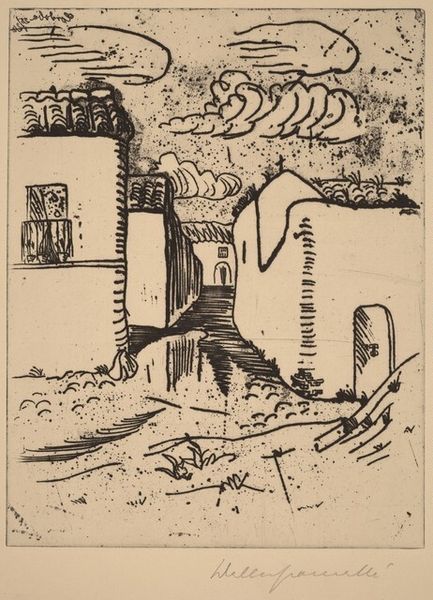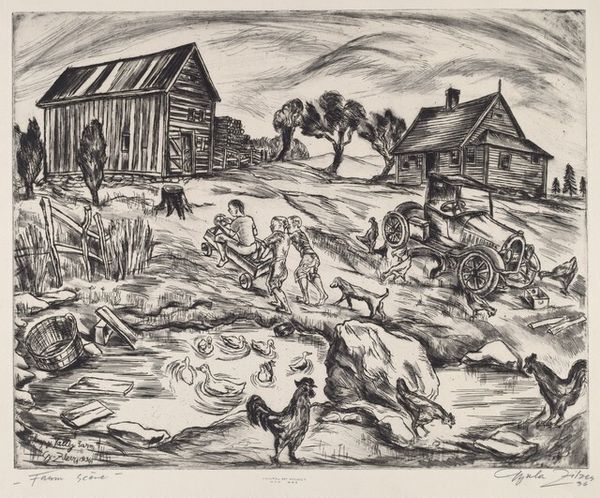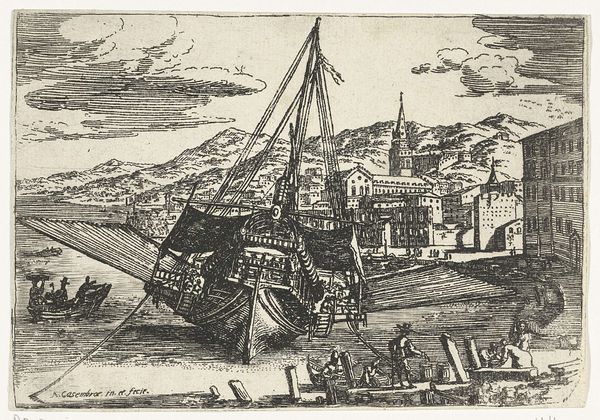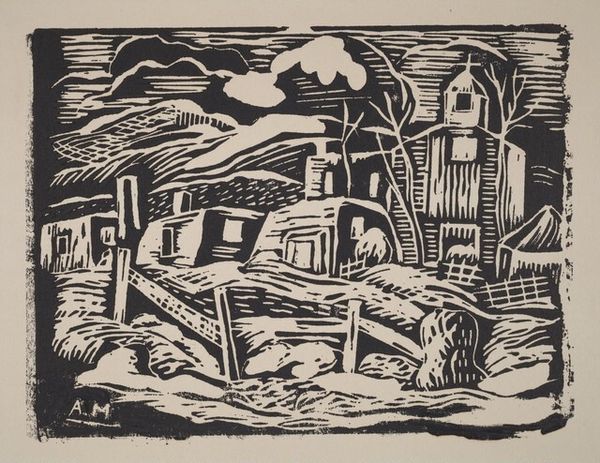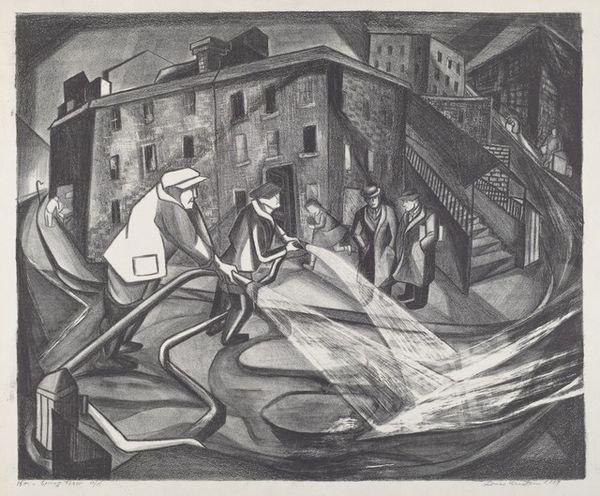
print, woodcut
#
pen drawing
# print
#
landscape
#
woodcut
#
cityscape
#
genre-painting
#
realism
Dimensions: Image: 200 x 247 mm Sheet: 228 x 292 mm
Copyright: National Gallery of Art: CC0 1.0
Curator: Looking at this woodcut titled "Sunday on the Waterfront" from 1936 by Charles Frederick Surendorf, the first thing that strikes me is its stillness. Editor: Stillness? I see more a pervasive tension! The sharp, angular lines give everything a sense of unease, from the rippling water to the reclining figure. Curator: Indeed. The formal qualities definitely amplify the mood. I see the artist using the stark black and white contrast of the woodcut medium to enhance a kind of urban languor amid economic strain. Editor: Absolutely. Consider Surendorf's choice of woodcut. The process is laborious, each line carefully carved—reflecting the labor inherent in a waterfront community during the Depression. And let’s think about consumption: prints make art accessible and reproducible for the masses, not just a select few. Curator: A crucial point. Furthermore, observe the composition—how the artist situates the resting figure in the foreground, seemingly disconnected from the bustling city skyline and industrial activity of the port, emphasizes an individual's isolation perhaps representative of that era. Editor: Yes, but it’s also visually clever! The figure mirrors the hard angles of the pier, almost becoming one with the environment, while the boat embodies motion; and consider, too, that this juxtaposition of active and inactive draws my eye across the landscape as surely as a carefully-staged painting does. Curator: So true. There is almost a photographic sense to it; like a snapshot of working class life and leisure at that particular historical intersection. The city itself acts like an observing crowd far removed from the daily concerns of those who toil there. Editor: Exactly! It's an astute artistic commentary that acknowledges a cultural milieu, offering insight to the working lives of countless citizens. A true testament to its time. Curator: Ultimately, it is amazing how Surendorf created an intricate visual record of the city, labor and social dynamics all from simple but intentional incisions in wood. Editor: Agreed. His mastery is evident, both materially and formally, transforming a potentially bleak image into a reflection on human persistence and artistry.
Comments
No comments
Be the first to comment and join the conversation on the ultimate creative platform.
